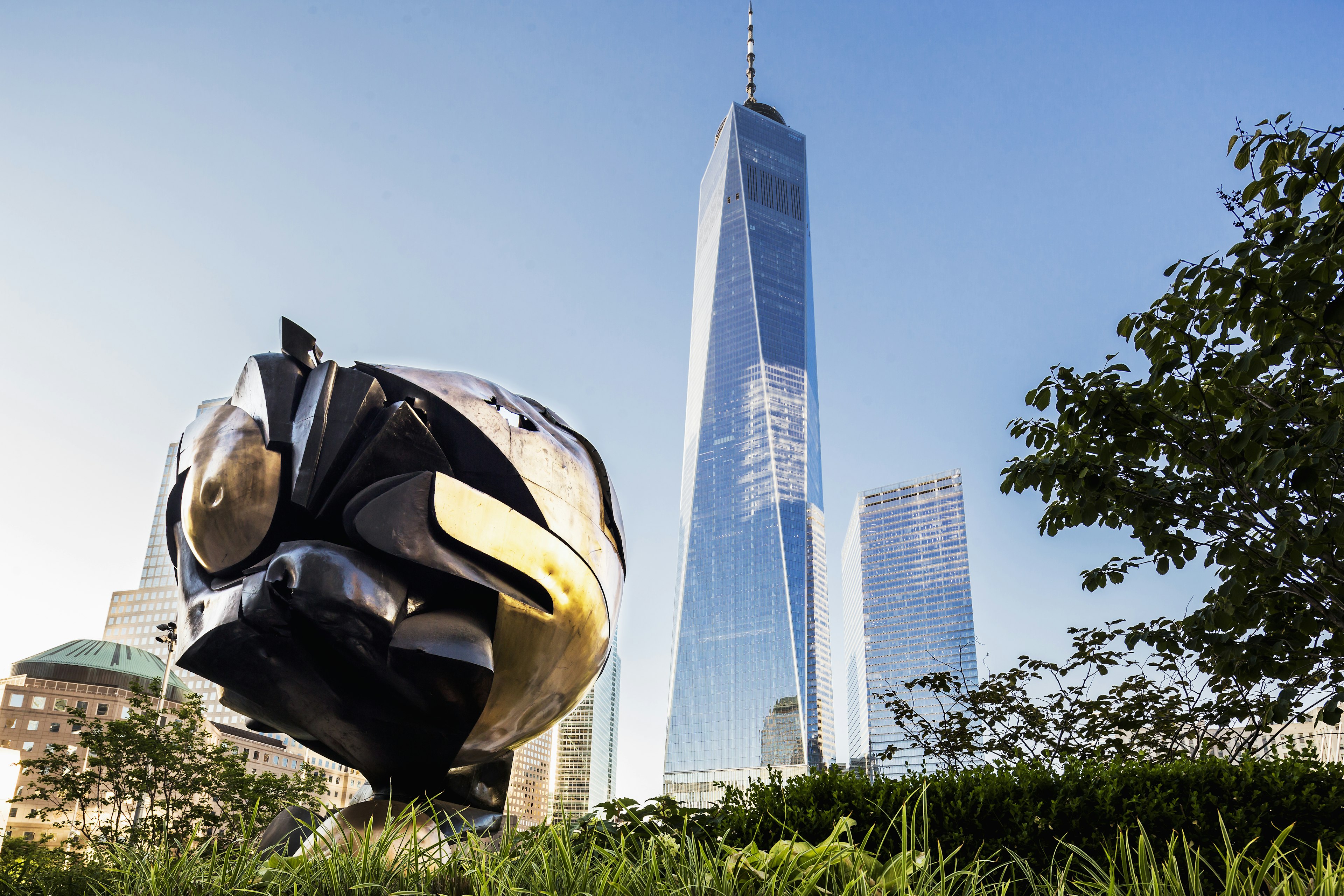I was a newly licensed New York City tour guide in 1995 when my relationship with The Sphere began.
I had been stationed at the World Trade Center complex, meeting tourists from around the world, who were there to visit the 110-floor Twin Towers. At the base of the towers was an expansive plaza, which was surrounded by five additional impressive buildings that stood on the periphery of the 16-acre complex. In a space between the towers, atop a dark, granite fountain, sat The Sphere.
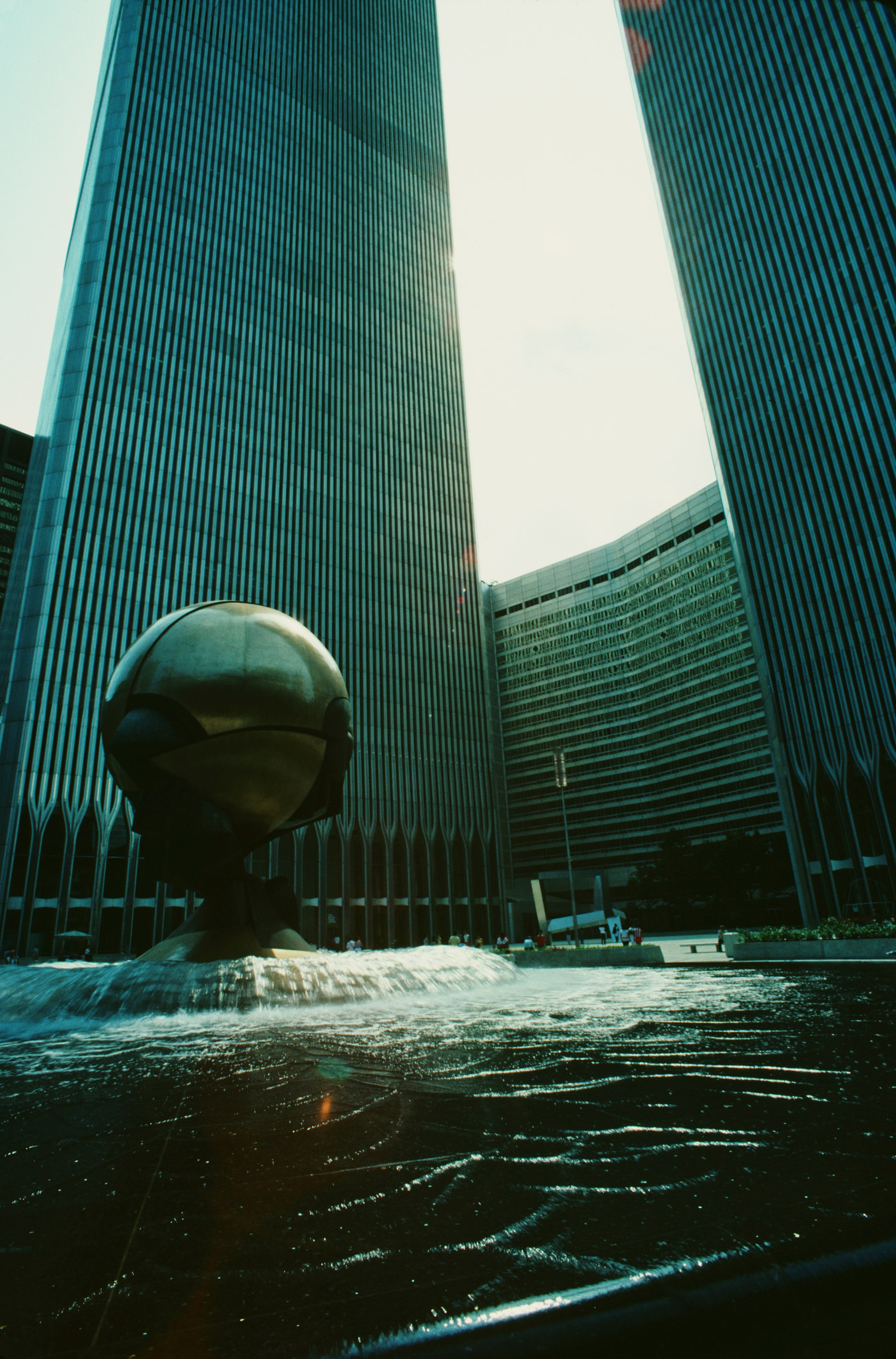
The Sphere at the center of it all
One of the largest bronze sculptures in the world, The Sphere commanded attention. It stood 25 feet high, 17 feet wide and, with the fountain, weighed more than 20 tons. The Sphere was mounted on a circular disc that sprayed water in a ring running around the sculpture. The fountain and The Sphere were a perfect complement to each other, together creating an impressive focal point in the Austin J. Tobin plaza.
It was created by the German sculptor Fritz Koenig. Koenig was born in 1924 in Würzburg, Germany, and became one of the most important and prominent German sculptors after WWII. He was commissioned by the Port Authority of New York and New Jersey after he was selected by Minoru Yamasaki, the original architect of the World Trade Center. Four years in the making, the massive sculpture was cast in 52 bronze segments, put together in Bremen, and shipped as a whole to Lower Manhattan. It was installed in 1971 and unveiled soon after, bringing Koenig worldwide recognition. Originally called Große Kugelkaryatid N.Y., which roughly translates to “Large Sphere N.Y.”, it eventually became known around World Trade Centre simply as “The Sphere.”
Traveling to New York City? 9 questions to ask yourself before you go in 2022
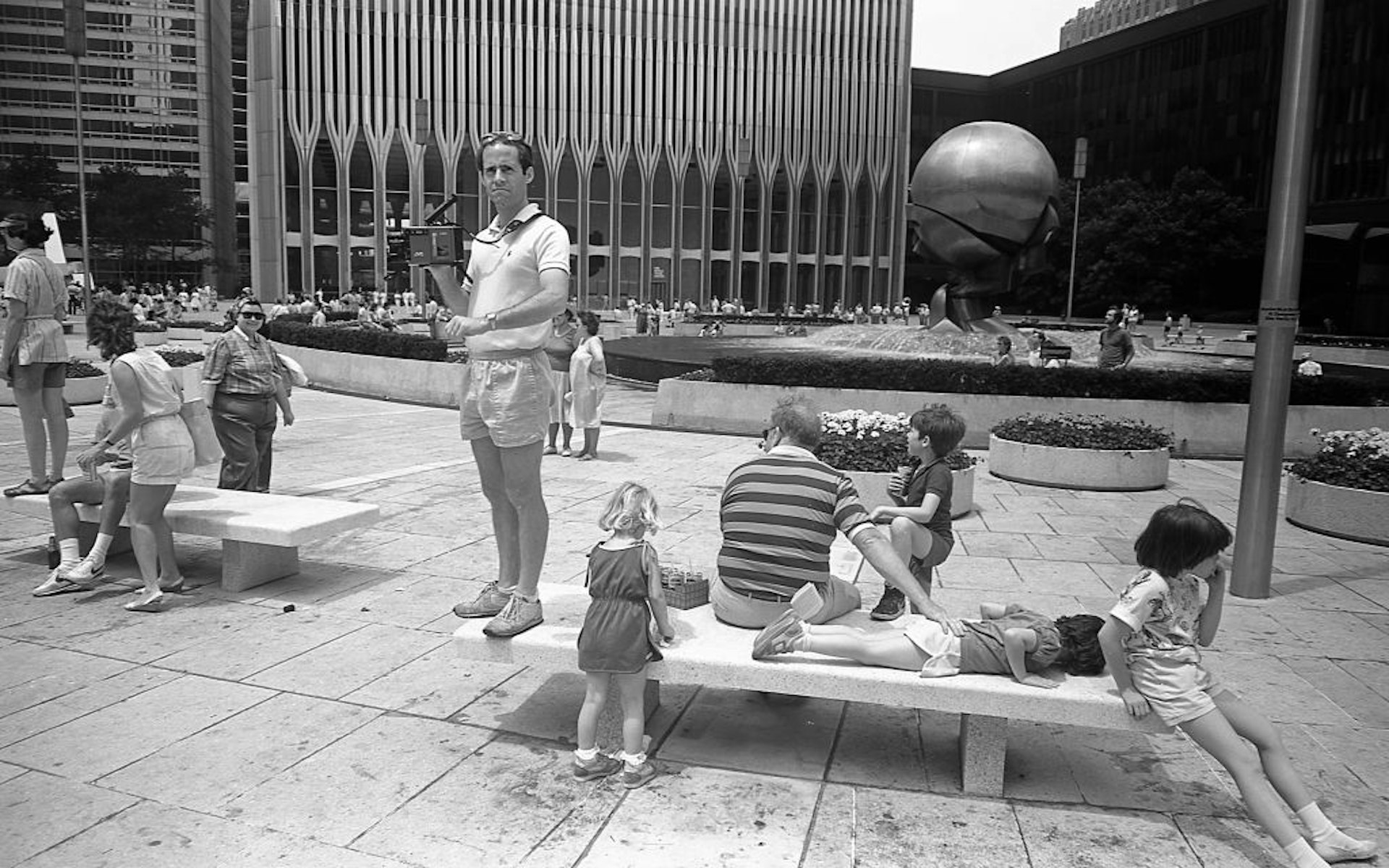
A contrast to the imposing Twin Towers
Koenig intended it to be a contrast to the imposing towers and a symbol of world peace through global trade. Created as an abstract reference to a globe, a perfectly round sphere it was not. Interrupting the smooth surface, almost as if a giant egg had begun to crack, long lines curved around its circumference. Between the cracks, large black geometric forms burst through the surface. It was featured in the backdrop of many polaroid photos of New Yorkers and visiting tourists.
16 things you have to do in New York City
Hanging out in the Austin J. Tobin Plaza
As the imposing towers soared to the heavens above, it was The Sphere that grounded visitors back on earth. The skyscrapers that made up the complex might not have been to everyone's taste, but the Austin J. Tobin Plaza was embraced. It was a unique space that provided a tranquil oasis inside a loud and bustling city and was used as a public performance venue, hosting concerts and dance productions. But whether a source of enjoyment or a meeting spot, The Sphere presided over the plaza like a friendly giant.
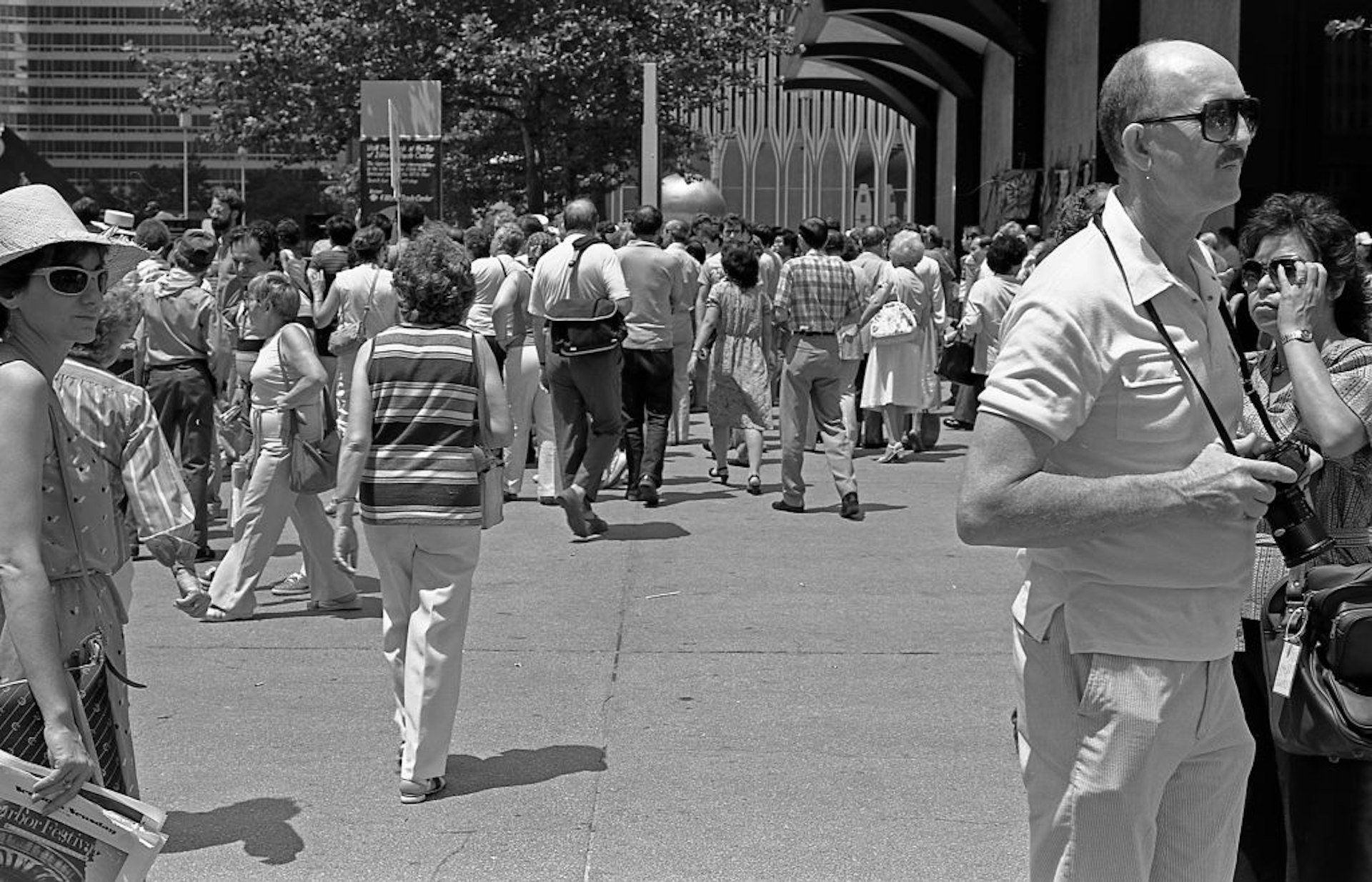
Out of the rubble of Ground Zero
On September 11, 2001, we witnessed the attacks on the World Trade Center from our balcony. We were forced to evacuate our apartment, and my tour guiding jobs ceased. I had imagined The Sphere had turned to dust since it lived in the shadow of the towers. According to the 2001 documentary, Koenig’s Sphere, directed by Percy Adlon, Koenig had also assumed the worst. But from his home in Germany shortly after the attacks, he called a friend in New York and said, “It’s peeking out of the rubble. It’s not destroyed. I saw it on TV. It’s a miracle!”
Six months later came the announcement: The Sphere had been fully recovered from the rubble and was to be reinstalled in Battery Park. I rushed over the day it was unveiled. But as I approached, I stopped in shock. Gone was the golden shine, gone was the majestic aura. The Sphere was no longer a sphere.
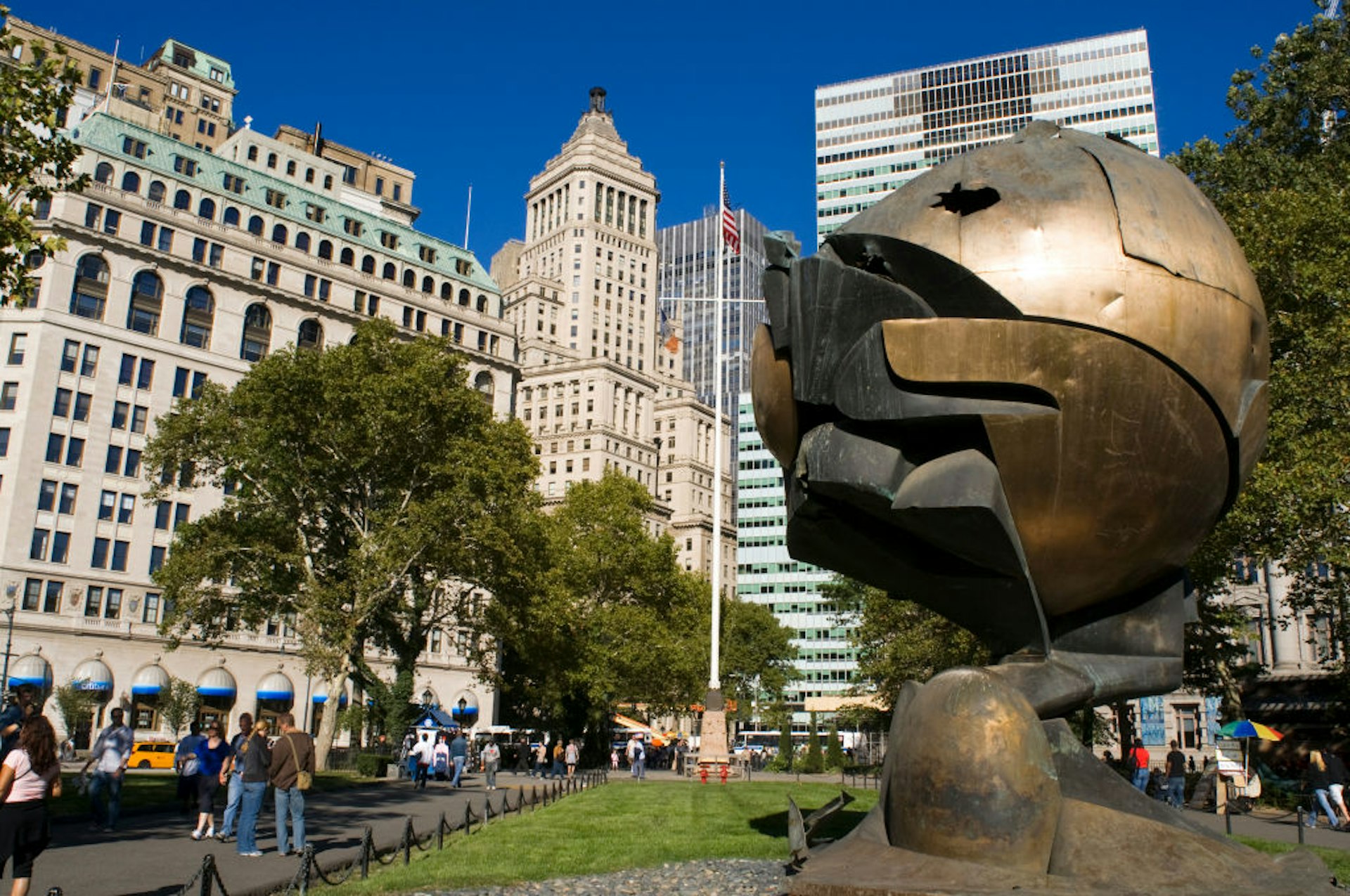
The Sphere had turned from a stunning piece of artwork into a reminder of what had happened and was given this temporary home while a decision on its future and that of the site of the attacks was made. Although Koenig initially balked at his beloved sculpture as a memorial, he came around, “It now has a different beauty, one I could never imagine. It has its own life – different from the one I gave to it.”
When tourists returned to the city, I would lead them to The Battery to catch a ferry to the Statue of Liberty/Ellis Island. No matter how pressed for time we were, I would stop the group near The Sphere and tell them the history of this battered sculpture. It became a way of demonstrating to passers-by that New York City was coming to terms with the loss and destruction of 9/11.
Greenways and bike shares: top tips for cycling NYC like a pro

The Sphere's new home in Liberty Park
In 2017, The Sphere was finally relocated to her permanent home at Liberty Park overlooking the new World Trade Center site. The piece of art now rests in a beautiful, elevated space with a living wall of ivy, gardens and trees (including a sapling from the Anne Frank tree), where it can watch over the construction of the new St. Nicholas Greek Orthodox Church. It overlooks the original footprint of the World Trade Center and the 9/11 Memorial and Museum. The park’s panoramic views invite visitors to rest and reflect.
A symbol of New York's resilience
The Sphere’s survival and visibility have been important to the city, especially to family members of those who lost loved ones in the attacks. Michael Burke, whose firefighter brother, Capt. William F. Burke Jr, died in 9/11 observes that The Sphere’s “scars and battered shape testify to the perseverance and resiliency of New York, America, and of those values."
What you should know before traveling to New York City
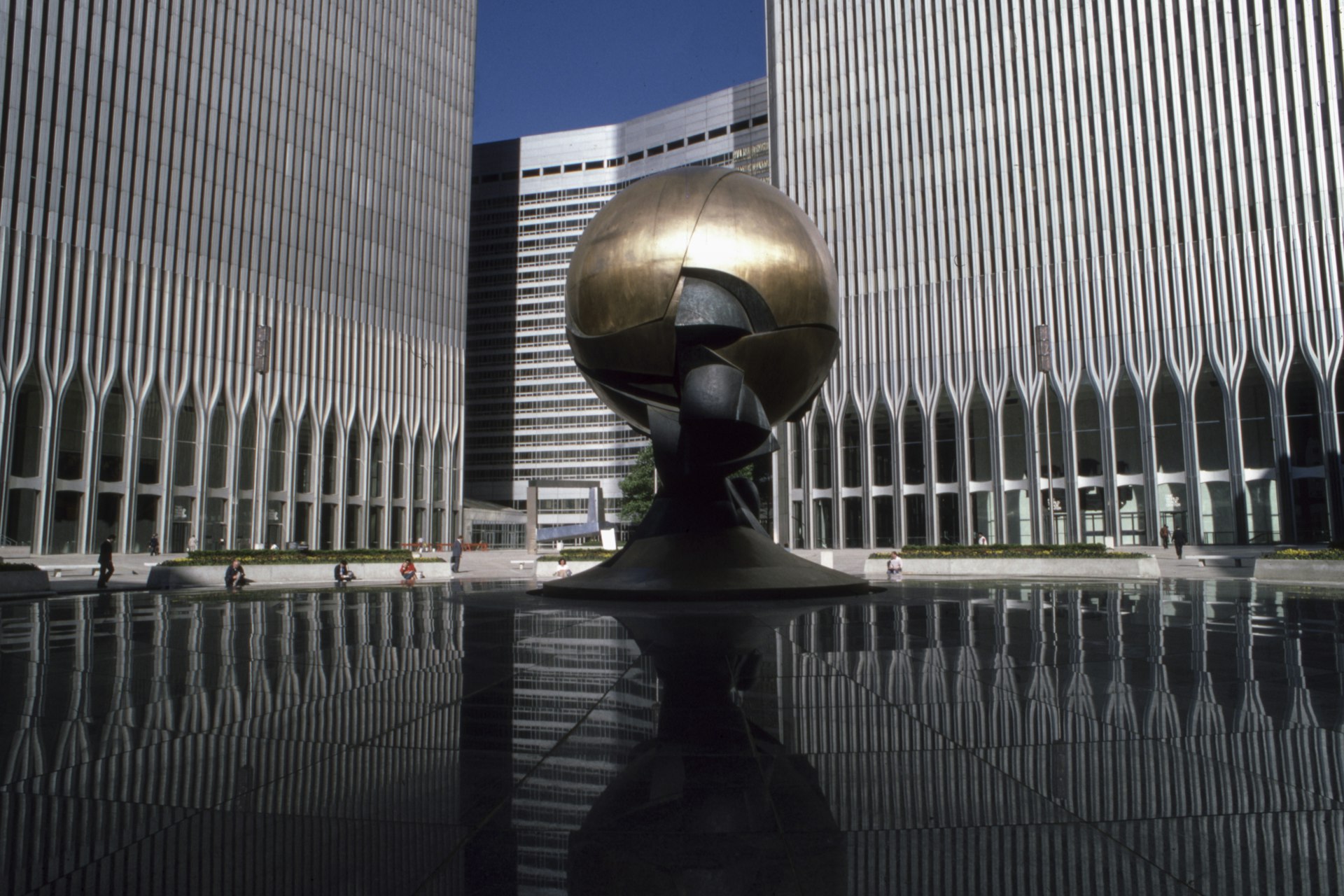
The Sphere is one of the few survivors of the devastation of 9/11. It's not the beauty it once was, but it has a new, more important role to fulfill – to connect the present to that past.
